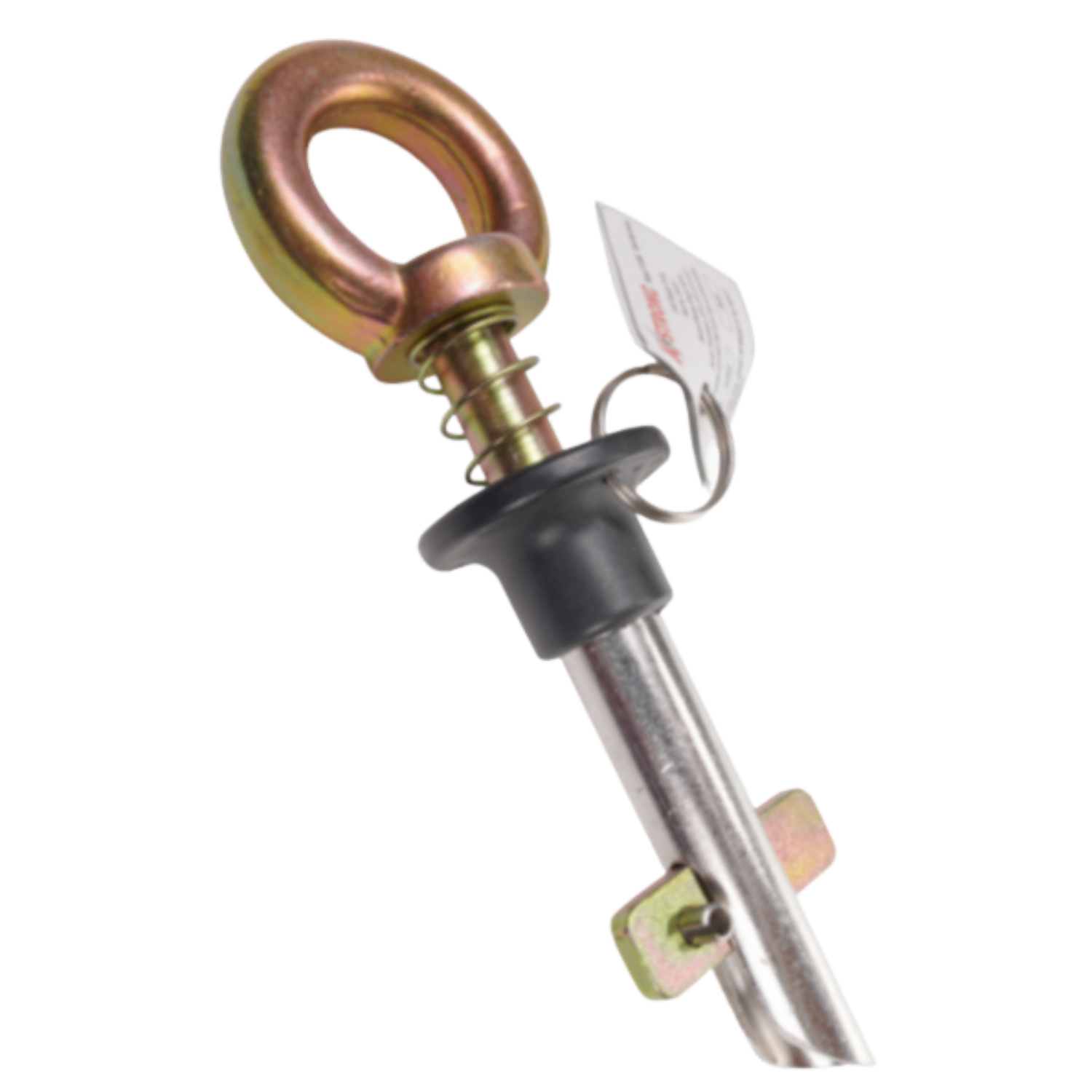Understanding the Purpose of a Removable Girder Anchor
A Removable Girder Anchor plays a vital role in providing safe and secure attachment points for workers performing tasks at height. Unlike permanent or welded anchors, this type of anchor can be easily installed, removed, and reused without damaging the beam or structure it attaches to. Engineers and construction professionals often prefer removable anchors because they provide flexibility and cost savings, especially in temporary projects or frequently changing work environments. These anchors are commonly used in construction, industrial maintenance, and inspection work where reliable fall protection is required. The design ensures that workers have a stable connection point while maintaining the structural integrity of the beam. By eliminating the need for permanent modifications, the Removable Girder Anchor offers a smart balance between safety, efficiency, and practicality.
The purpose of this device goes beyond simple anchorage. It reflects an evolving safety culture in industries that prioritize fall protection and worker mobility. Because it can be transferred from one beam to another, it supports dynamic worksites, giving crews the flexibility to adapt as projects progress.
Design and Functionality of Removable Girder Anchors
A Removable Girder Anchor is typically built with robust materials such as high-strength steel or stainless steel to ensure durability and load-bearing reliability. The design usually features a clamping mechanism that grips onto a girder or I-beam flange, creating a stable connection point for lifelines, harnesses, or lanyards. Its removable mechanism allows quick installation and removal without the need for drilling, welding, or complex tools. This makes it ideal for temporary worksites or projects where mobility and efficiency are priorities.
The functionality of a Removable Girder Anchor centers around its ability to bear significant loads safely. Many anchors are designed to meet or exceed strict safety standards like OSHA and ANSI. These standards ensure the anchor can handle both static and dynamic forces encountered in fall arrest scenarios. Modern anchors also come with adjustable ranges to fit different beam sizes, ensuring versatility across job sites.
Typical design components include:
- Adjustable jaw or clamp system for different flange widths
- Locking pin or lever for secure installation
- Swiveling D-ring or attachment point for lanyards
- Corrosion-resistant coating for long-term durability
With these features, workers can depend on consistent performance, whether in harsh outdoor environments or controlled industrial settings.
Benefits of Using Removable Girder Anchors
One of the main benefits of using a Removable Girder Anchor is enhanced worker safety. It provides a reliable attachment point for fall arrest systems, reducing the risk of serious injuries. Portability is another major advantage—workers can easily relocate the anchor as needed, making it an efficient solution for temporary or multi-location projects. This reusability also contributes to cost savings over time, as one anchor can serve multiple applications.
Durability and flexibility are also defining traits. Because it can be installed and removed without causing structural damage, it helps maintain the integrity of steel beams and girders. The ability to quickly reposition the anchor improves worksite productivity, as workers spend less time setting up and more time completing essential tasks.
Key advantages include:
- Easy installation and removal
- Reusable design for long-term cost savings
- Compatibility with various fall protection systems
- Compliance with safety standards like OSHA and ANSI
- Minimal structural impact on beams
Overall, Removable Girder Anchors are a sustainable, efficient, and safe solution for a wide range of industrial applications.
Key Features That Define High-Quality Removable Girder Anchors
High-quality Removable Girder Anchors are distinguished by their superior materials, engineering precision, and safety features. Manufacturers use corrosion-resistant metals such as stainless steel or zinc-plated alloys to ensure longevity even in harsh weather or industrial conditions. A good anchor is lightweight for portability but strong enough to support heavy loads, offering an optimal balance between mobility and performance.
The adjustable jaw or clamp system allows the anchor to fit a variety of beam flange widths. Locking mechanisms such as safety pins, bolts, or cam levers ensure that once installed, the anchor remains firmly in place. Many designs also include swiveling D-rings or rotating components, allowing workers to move freely without twisting their lifelines.
Notable design qualities include:
- Rugged construction for high load capacity
- Lightweight structure for easy transport
- Adjustable fit for multiple beam sizes
- Rust- and corrosion-resistant materials
- Safety certification markings for assurance
These characteristics make the Removable Girder Anchor not just a piece of hardware, but a critical safety tool engineered to protect lives in demanding environments.
Installation Best Practices
Installing a Removable Girder Anchor requires proper technique to ensure safety and performance. Before installation, workers should inspect the anchor for signs of wear, corrosion, or damage. It’s important to verify that the girder or beam is structurally sound and clean of debris or coatings that could affect grip. The anchor should be positioned according to the manufacturer’s guidelines, typically centered over the flange to ensure even weight distribution.
Once positioned, the anchor must be securely clamped or locked into place using the appropriate locking mechanism. Workers should double-check that the anchor doesn’t shift when loaded and that the D-ring moves freely for attachment. Periodic inspections during use are recommended to confirm continued stability.
Best practices include:
- Always follow the manufacturer’s installation guide
- Inspect anchors before and after each use
- Avoid using damaged or corroded components
- Ensure the girder surface is clean and free of oil or paint buildup
- Test the stability of the anchor before connecting safety gear
Proper installation ensures that the anchor performs at its full rated capacity, providing dependable protection in every application.
Comparing Removable Girder Anchors to Other Fall Protection Anchors
Removable Girder Anchors stand out for their flexibility and ease of use compared to fixed or welded anchors. Fixed anchors require permanent installation, often involving drilling or welding, which can weaken the structure or add labor costs. Removable anchors, on the other hand, offer instant setup and removal without damaging the girder.
Concrete anchors are another common option but are best suited for poured surfaces rather than steel beams. Girder anchors are specifically engineered for I-beams and steel structures, making them more appropriate for construction and industrial work. From a cost perspective, removable anchors provide better value since they can be reused across multiple projects.
Comparison highlights:
- Removable vs. Fixed: Removable offers mobility; fixed is permanent.
- Girder vs. Concrete: Girder anchors are designed for steel; concrete anchors for solid surfaces.
- Cost Efficiency: Reusable removable anchors reduce long-term expenses.
- Ease of Use: Quick setup and no structural alteration needed.
For industries that value adaptability and safety, Removable Girder Anchors are often the preferred choice.
Industry Applications and Use Cases
Removable Girder Anchors are widely used in sectors where fall protection and flexibility are critical. In construction, they serve as temporary anchor points for workers installing beams, roofs, or framework. In industrial maintenance, they enable safe access to elevated machinery or structures. Bridge inspections and infrastructure repairs also rely heavily on these anchors due to their quick setup and removal.
Energy and oil companies use them for tasks on rigs or elevated platforms, where safety and mobility are paramount. Even in manufacturing plants, removable anchors can be installed temporarily for equipment servicing or inspections. Their adaptability ensures they fit seamlessly into a wide range of operations.
Safety Compliance and Certification Standards
Compliance with recognized safety standards is a hallmark of a quality Removable Girder Anchor. OSHA regulations (such as 1926.502) and ANSI standards (like Z359) set requirements for design strength, performance, and testing. Anchors that meet these criteria ensure that workers have dependable protection from fall hazards.
Manufacturers often label their products with certification marks, providing peace of mind that the anchor has undergone rigorous quality checks. Proper documentation, including load testing and inspection reports, should always accompany certified products. Adhering to these standards not only safeguards workers but also strengthens a company’s reputation for safety and compliance.
Factors to Consider Before Choosing a Removable Girder Anchor
Selecting the right Removable Girder Anchor depends on several practical and safety-related factors. Start by checking the load rating to ensure it can handle the expected weight and forces. Next, verify that it fits the beam or girder dimensions at your job site. Environmental exposure should also be considered, as corrosion resistance is vital for outdoor or humid environments.
Key considerations include:
- Load capacity and weight rating
- Beam compatibility and adjustable range
- Material strength and corrosion resistance
- Ease of installation and removal
- Warranty and manufacturer support
Choosing the correct anchor ensures long-term reliability and protection for every worker on site.
Expert Recommendations for Maximizing Performance
Experts recommend storing Removable Girder Anchors in dry, clean environments to prevent corrosion. Regular training for workers handling fall protection systems is also essential. Inspections should be performed before every use and documented for compliance records. Integrating removable anchors with complete fall arrest systems—such as harnesses and lifelines—ensures maximum safety.
For optimal performance, avoid overloading the anchor or modifying it beyond manufacturer specifications. Regular maintenance, including cleaning and lubrication of moving parts, helps extend the life of the equipment.
Frequently Asked Questions (FAQ)
1. How much load can a typical removable girder anchor support?
Most anchors can handle loads between 5,000 and 10,000 lbs, depending on their design and certification.
2. Can removable girder anchors be used on painted or coated beams?
Yes, but ensure the coating doesn’t interfere with the clamp’s grip or slip resistance.
3. Are these anchors suitable for permanent installations?
They are designed for temporary or portable use; permanent anchors are better for long-term fixtures.
4. How often should removable girder anchors be inspected?
Inspect before each use and periodically as part of scheduled safety maintenance.
5. What safety standards should I look for when purchasing one?
Always look for compliance with OSHA 1926.502 and ANSI Z359 standards for fall protection.
Takeaway
The Removable Girder Anchor is a vital safety innovation that combines strength, mobility, and reliability. Its design enables secure fall protection without compromising structural integrity, while its portability reduces costs and increases flexibility across worksites. For professionals in construction, maintenance, and industrial sectors, choosing a high-quality, certified anchor means investing in worker safety and project efficiency. By understanding proper installation, inspection, and usage, organizations can ensure their teams stay protected while performing demanding tasks at height.











